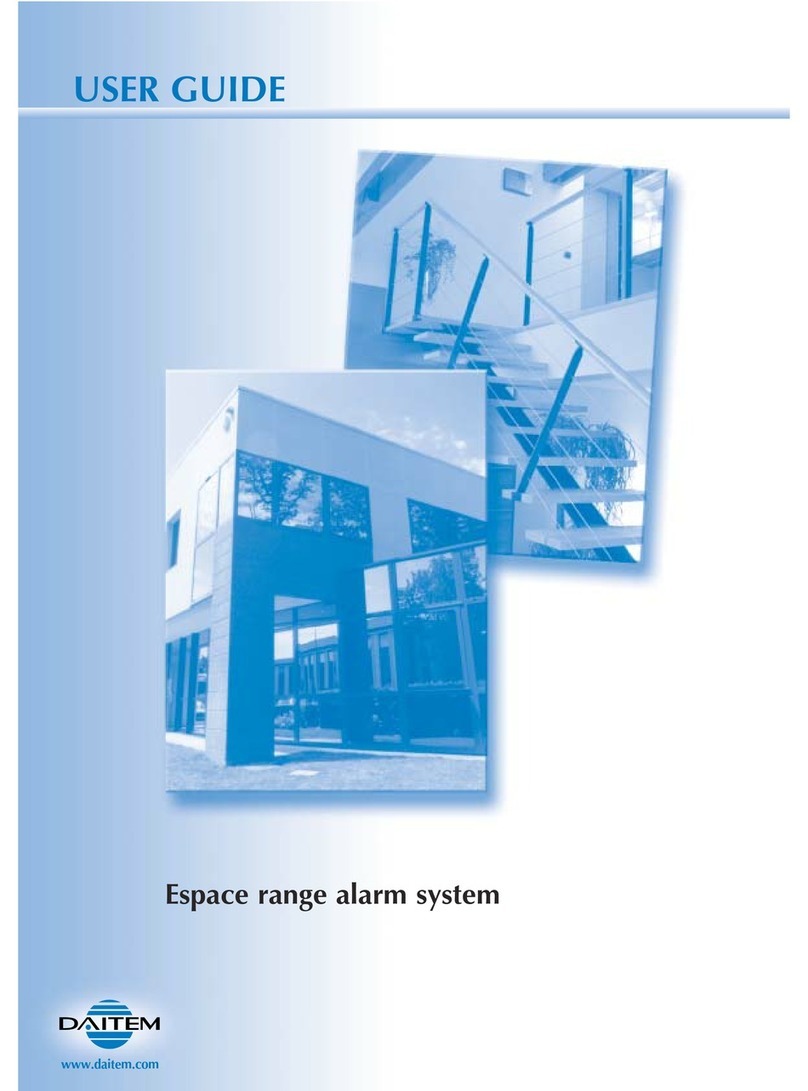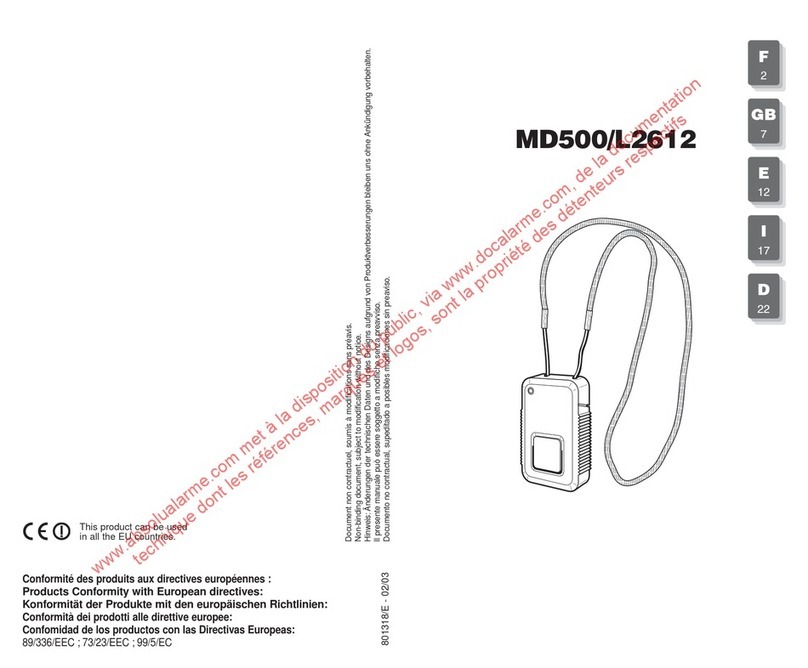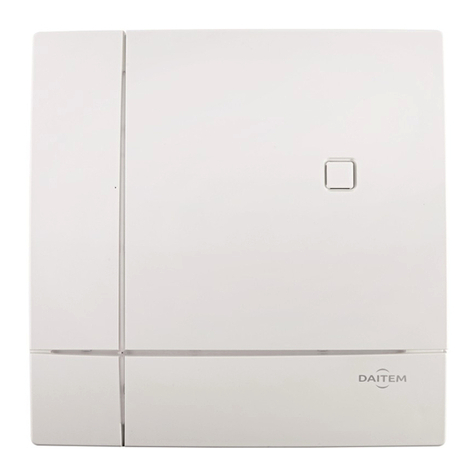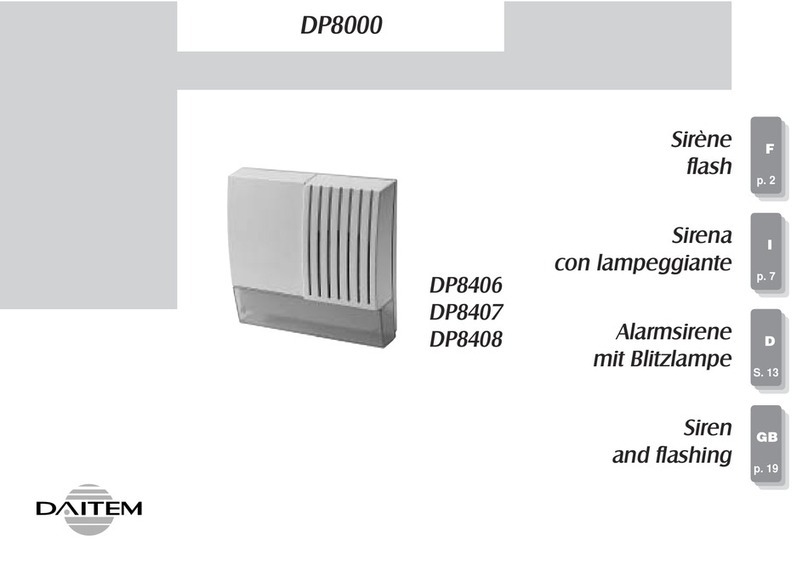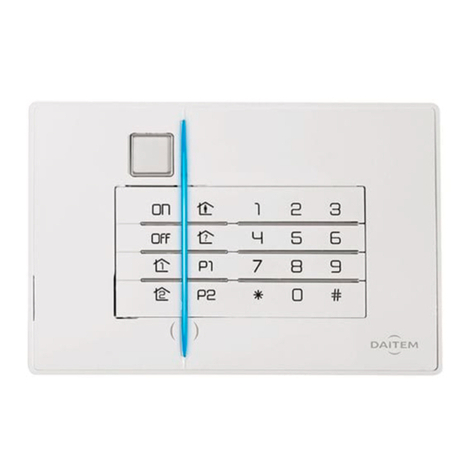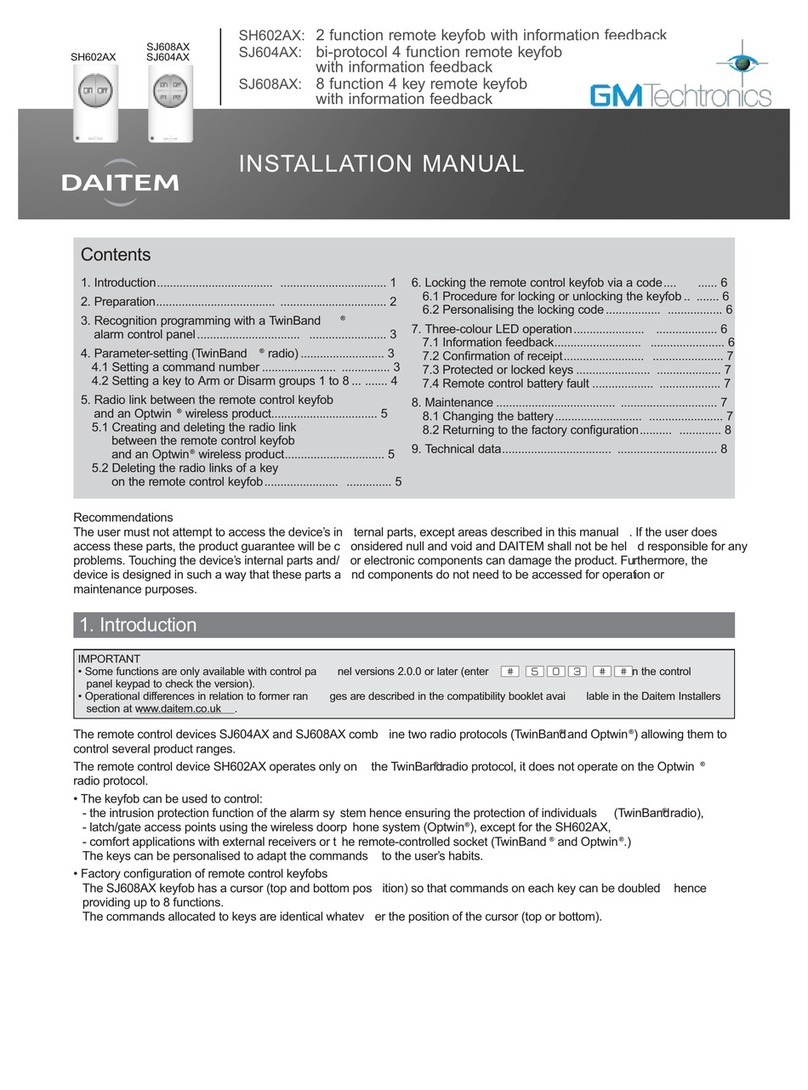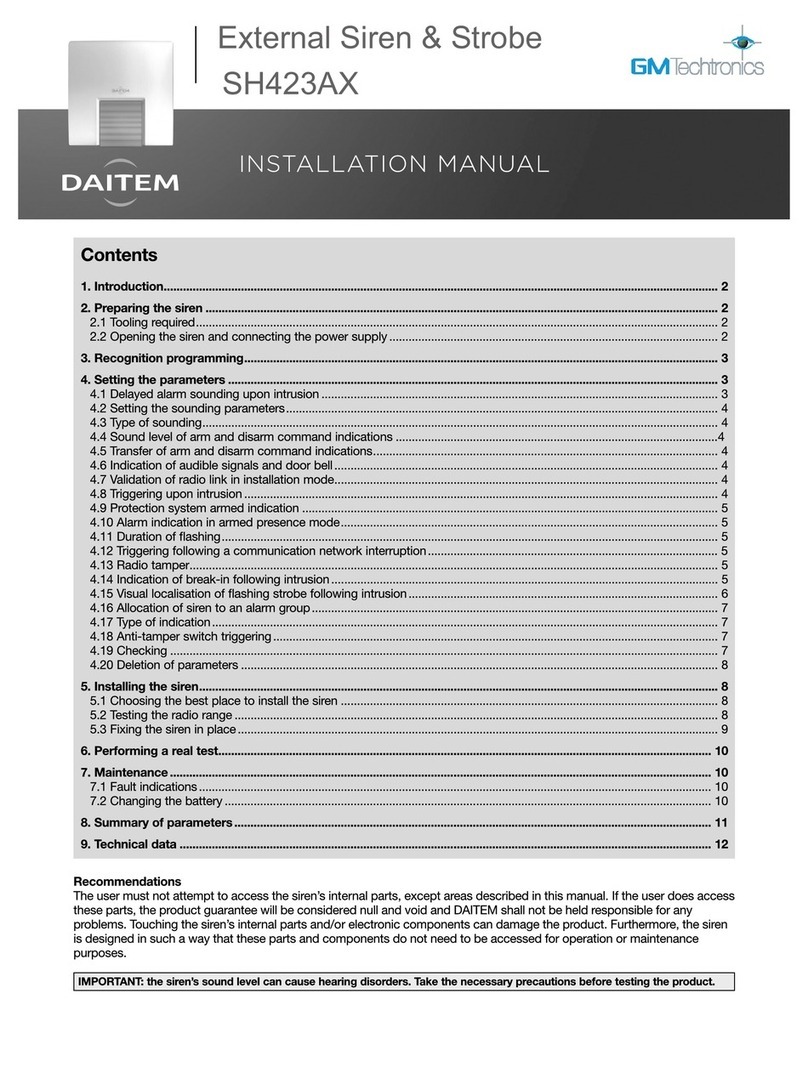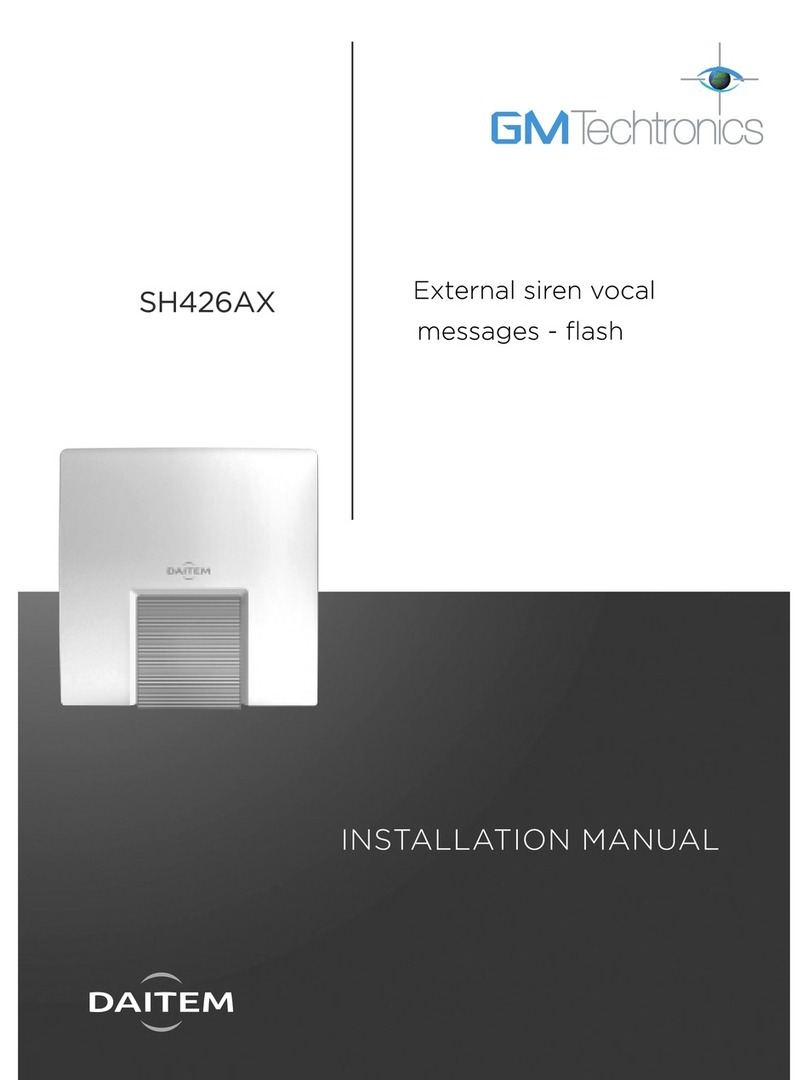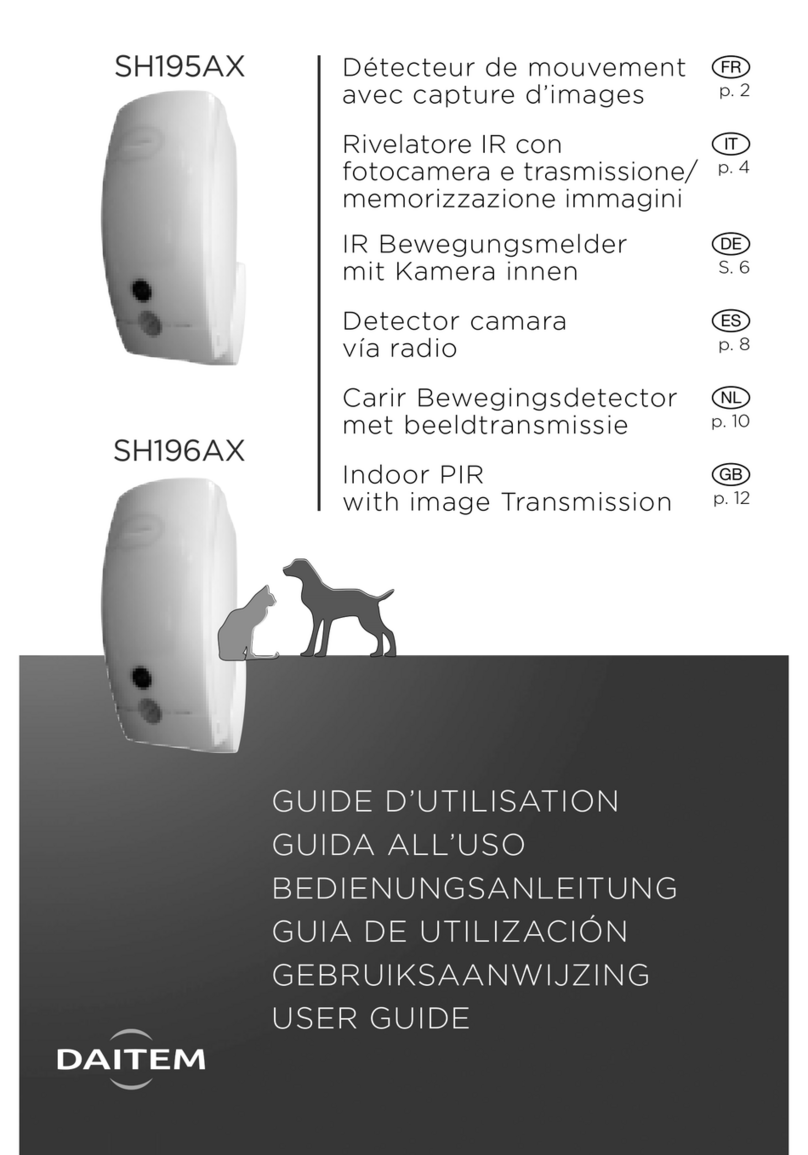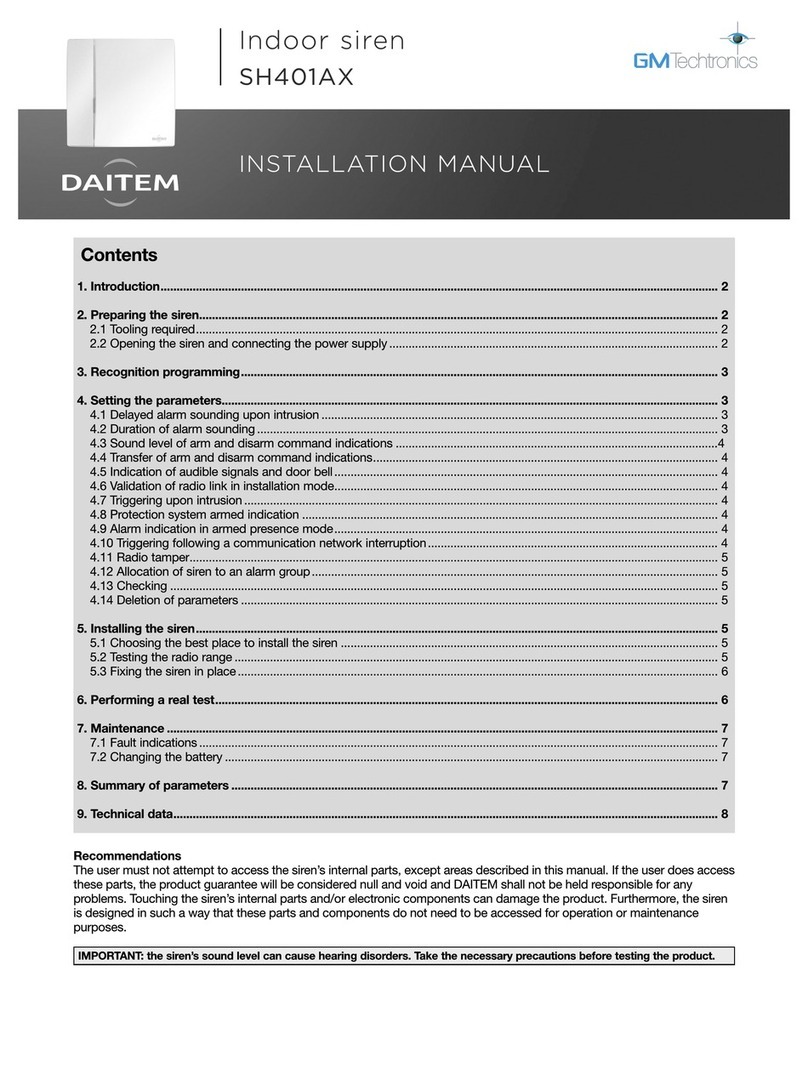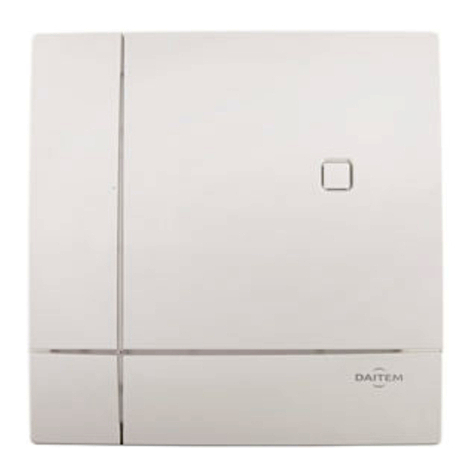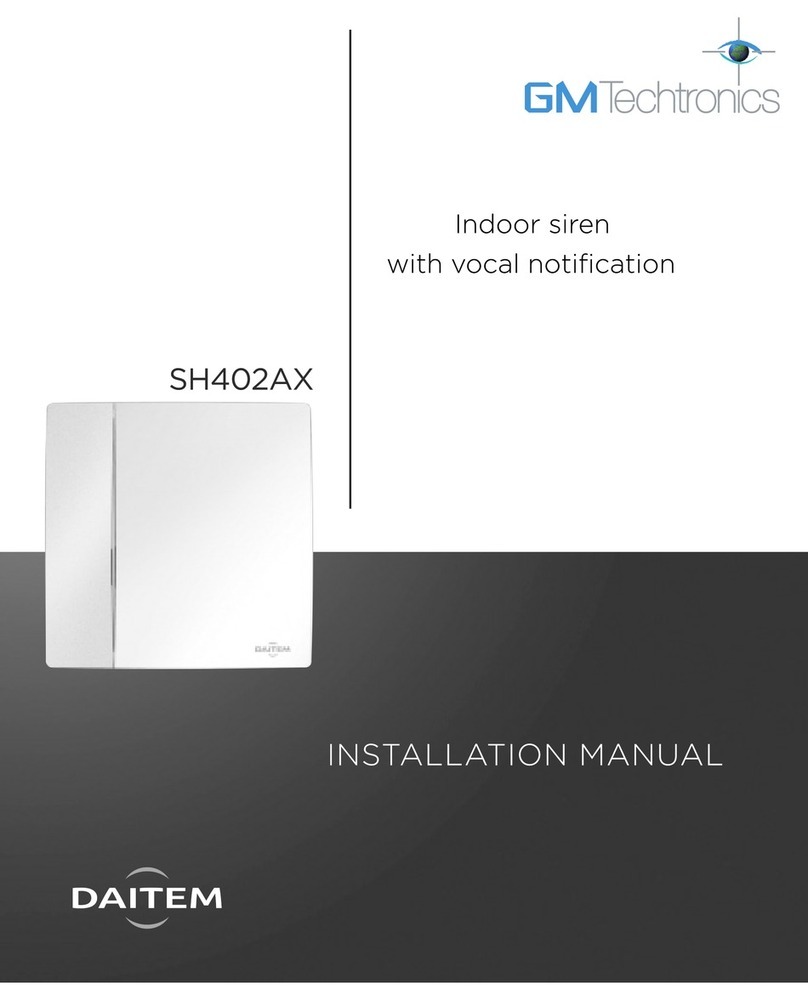3
Foreword
We would like to thank you for buying an alarm pendant. To install the pendant in the best conditions, we advise
you to do the following:
1. read the precautions to be taken (below) as well as the “Introduction” and “Operation” chapters,
2. follow the chronological order of the manual, which describes the different operations to be performed step by
step.
Precautions to be taken:
• The pendant has been designed with a non-dismountable enclosure to guarantee that it is watertight. The batteries cannot be
replaced. Change the pendant at the end of its battery life.
• In its factory configuration, the pendant’s battery life is 10 years (based on 1 activation per day). Depending on its use and
possible reprogramming, the pendant’s battery life may be reduced to roughly 5 years (based on 5 activations per day).
• In normal conditions of use, the sliding part of the pendant should be kept closed to prevent premature battery wear.
• If the user has a pacemaker, s/he must check with his/her doctor whether the device used is compatible with the pendant.
The pendant’s radio characteristics are given in the chapter entitled “Technical data” at the end of this manual.
• If the pendant’s batteries are not used for long periods of time, this may stop the pendant working. To prevent this from happening, it is
strongly advisable to perform a weekly battery test, as described in the chapter entitled “Battery status indication”. The user can also test
the status of the batteries at any time to check that the pendant is working properly.
• The pendant has an average radio range with respect to the control panel (or dialler) of 200 m in free field conditions. This means that it will
not work outside of this range given that the control panel (or dialler) will not be able to receive the messages transmitted by the pendant.
ikewise, the control panel (or dialler) will not transmit alarms to the pendant user if the user is located outside of this range.
Furthermore, owing to the composition of certain types of construction materials (some of which prevent or distort the propagation of radio
waves; see control panel manual), and depending on how the pendant is activated and worn (e.g. close to the body), the radio range can be
reduced. Taking into account these requirements, and in order to guarantee the best operating conditions for the user, it is essential to test
the pendant’s radio coverage as soon as it is installed. This test is described in the chapter entitled “Testing operation and radio
coverage in test mode”).
• Alarms transmitted by the pendant are sent to the control panel (or dialler) installed in the user’s home. They are taken into account
according to the configuration chosen when the pendant is installed. The pendant is not a medical tele-assistance device. It only enables a
certain number of alarms defined in this manual to be triggered. However, whatever its configuration, it cannot guarantee that the user
will receive personal or emergency assistance. When the pendant is connected to a remotely monitored alarm system, the alarms
transmitted to the remote monitoring service will be processed according to the provisions outlined in the remote monitoring contract.
Unless the emergency calls issued by the pendant are transmitted to a remote monitoring centre fitted with a medical unit, the alarms issued
will not be treated as medical emergencies. It is therefore up to pendant users wishing to be connected to a remote monitoring company
to ensure the company offers this type of service, and notably to check whether it provides medical assistance.
